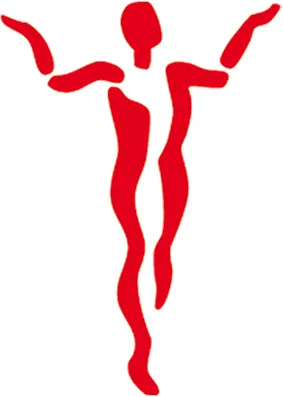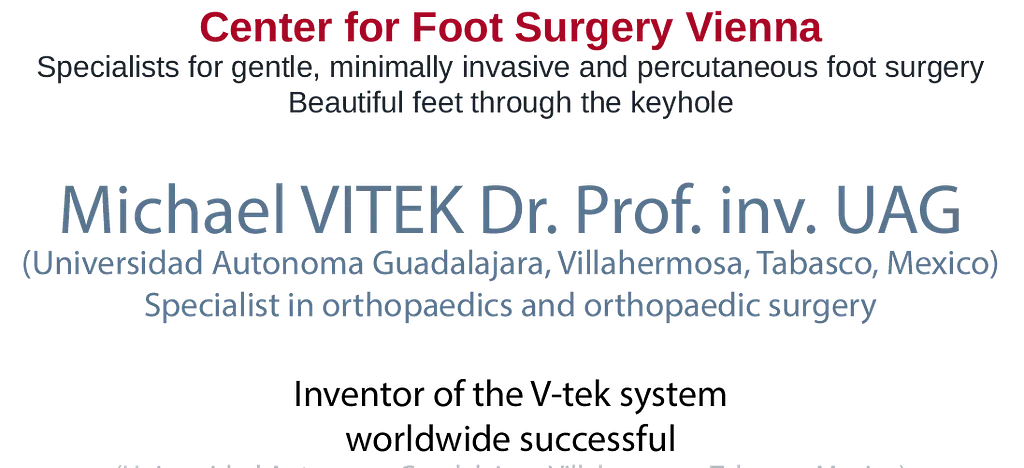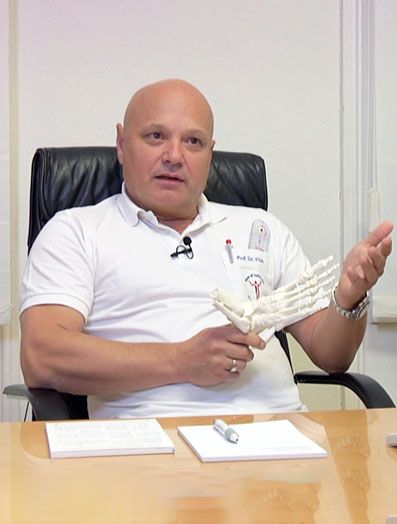Skewed flat foot
Or: Pes Planovalgus
The cause and the history are the same as for the skew foot.
The skewed flat foot is effectively the intensification of a skew foot, as apart from the outward tilted heel (valgus) and the resulting inward bending of the foot, the longitudinal arch flattens even more or is completely lifted.
If a skewed flat foot remains long untreated, then a fixation of the state of transformed bones and degeneration (abrasion) is created due to the muscle and ligament weakness. The flexible skewed flat foot becomes a rigid and stiff one. A childlike, loose skewed flat foot is correctable by tiptoeing, but the fixed or rigid skewed flat foot can not be corrected this way.
Treatment
Conservative treatment is the same as for the skewed foot. If an adolescent foot has gotten into a fixed state already, it can cause pain. Then casts, anti-inflammatory medications and possibly orthopedic shoes are required.
Surgical treatment
Not the shape of the foot itself, but any pain and dysfunction are the indications for surgery.
Between the eighth and twelfth year, a so-called endo-orthotic implant (which is an internal remedy) can be installed. It is a kind of an anchor or a screw of titanium or of self-dissolving plastic, inserted with an approximately 1 cm long section into the middle part of the lower ankle joint (the sinus tarsi). The implant prevents bending of the foot and may pave normal growth.
It dissolves completely in about five years or, in the case of a metal implant, is removed in a small operation again.
Problematic flexible skewed flat feet in young adulthood can be treated with a tendon redirection (of the tibialis anterior muscle). The tendon is redirected into a previously sculpted bone bed and so the collapsed longitudinal arch is straightened.
If the skewed flat foot is already rigid in adulthood, the foot is corrected using correctional cuts of the heel bone and/or joint stiffening in the lower ankle (see also flat feet).
Results
The success rate of the operations lies at about 90%.
Complications
Besides all the above mentioned typical operational complications, an over- or under-correction may occur. Theoretically, implants can be placed incorrectly or may break or penetrate the bone. Furthermore, in cases with joint stiffness, dysfunction or movement restrictions may occur, such as difficulty in walking on uneven or sloping ground.
Example:
The longitudinal arch of the foot is even flatter than in case of the skewed foot, the heel is also in an X-shape.
On tiptoe, the loose skewed flat foot can be straightened.
The implant is inserted using a 2 cm long minimally invasive incision.
The X-ray after the implantation.
The implant prevents the bending of the talus and thus also of the entire foot.
It is implanted in children with symptoms between the ages 6-12, and directs the growth of the foot. It can also be used for adults with yet a flexible skewed flat foot. It then serves as an "internal correction" and spares the patient a much larger operation, as performed in case of a flat foot (see section “flat foot”).



